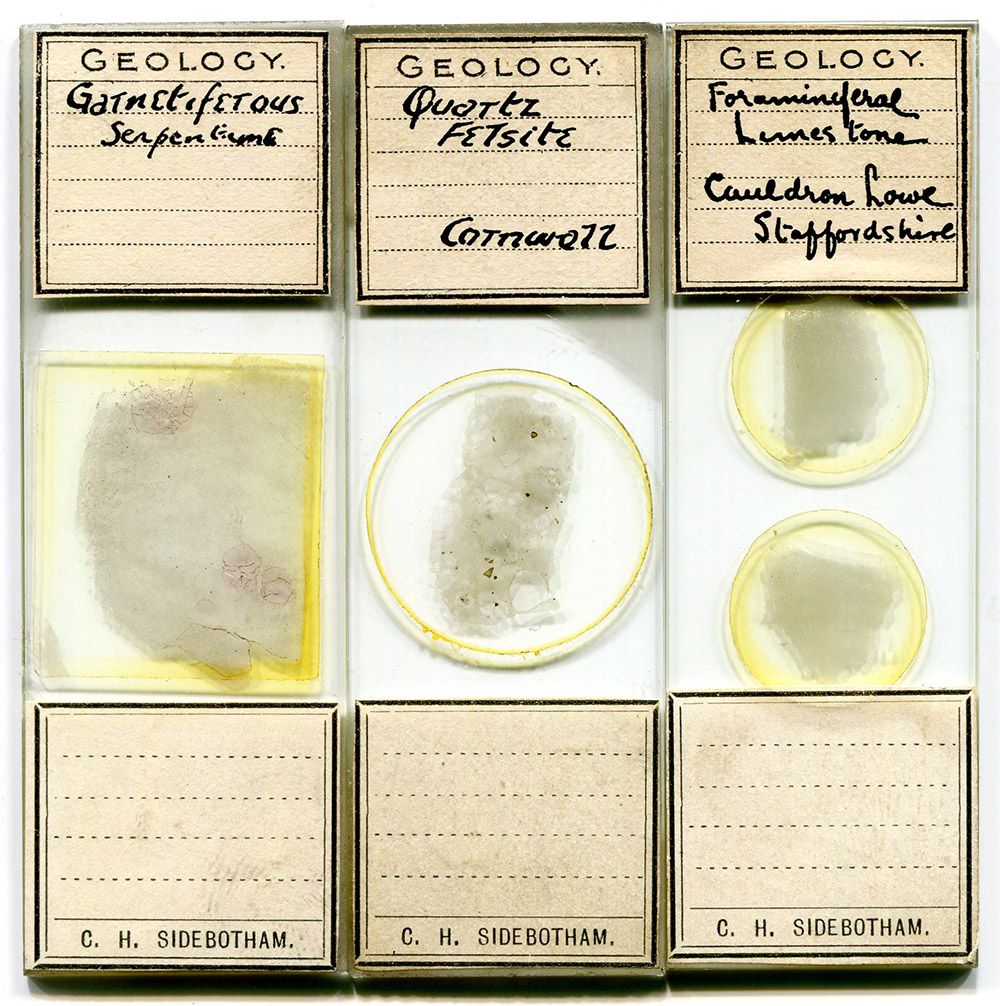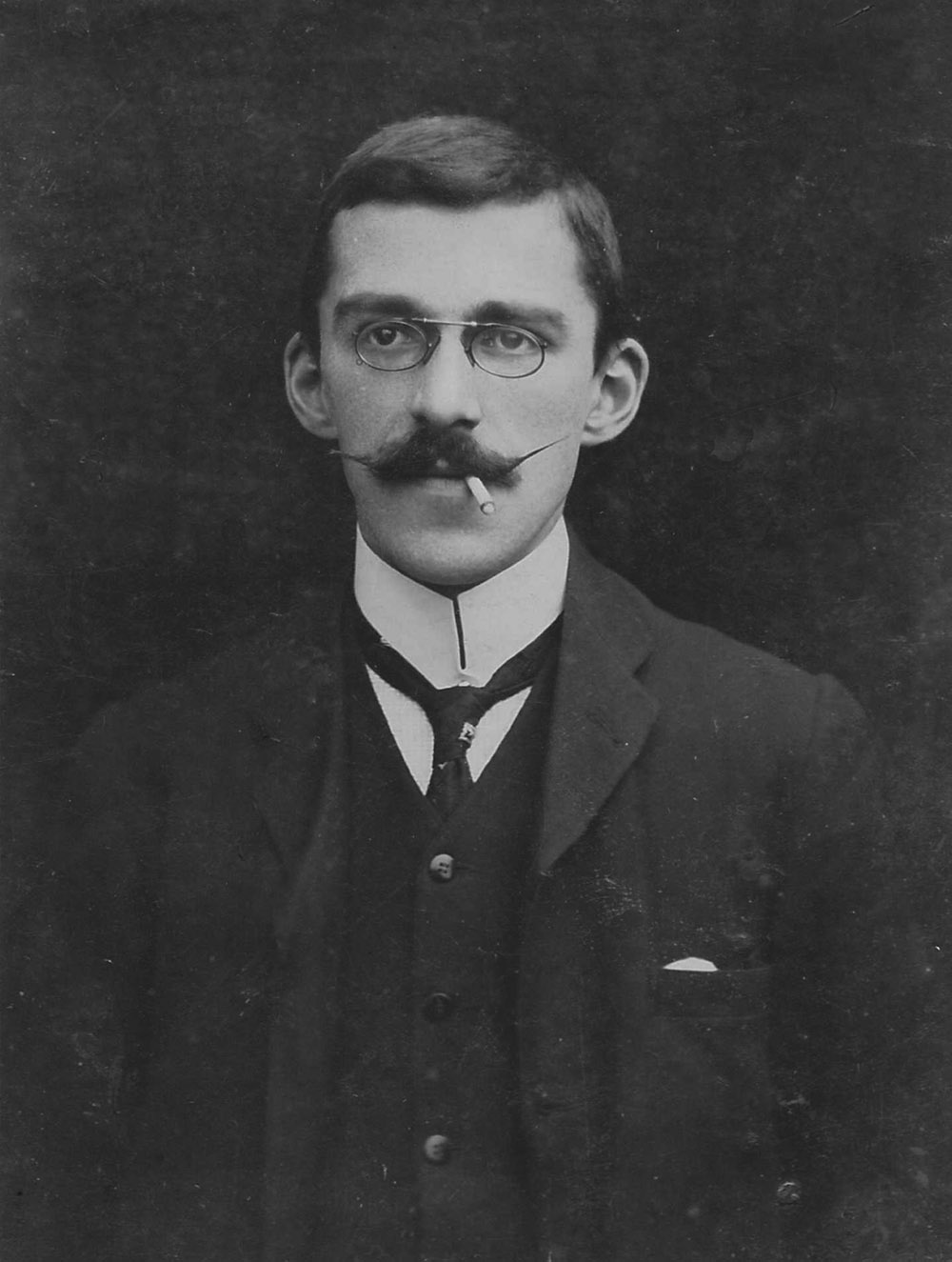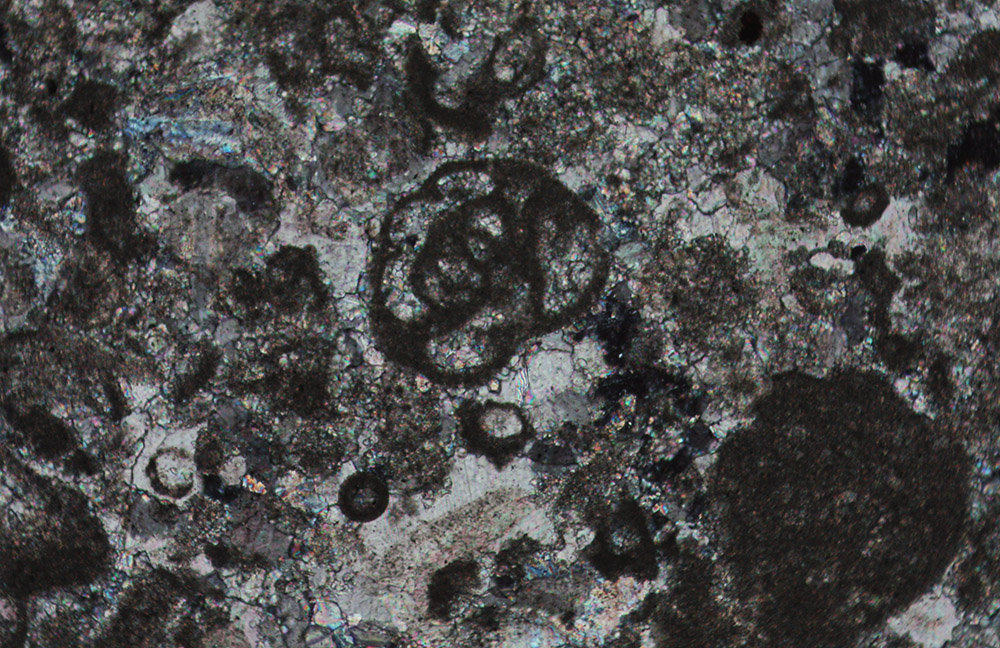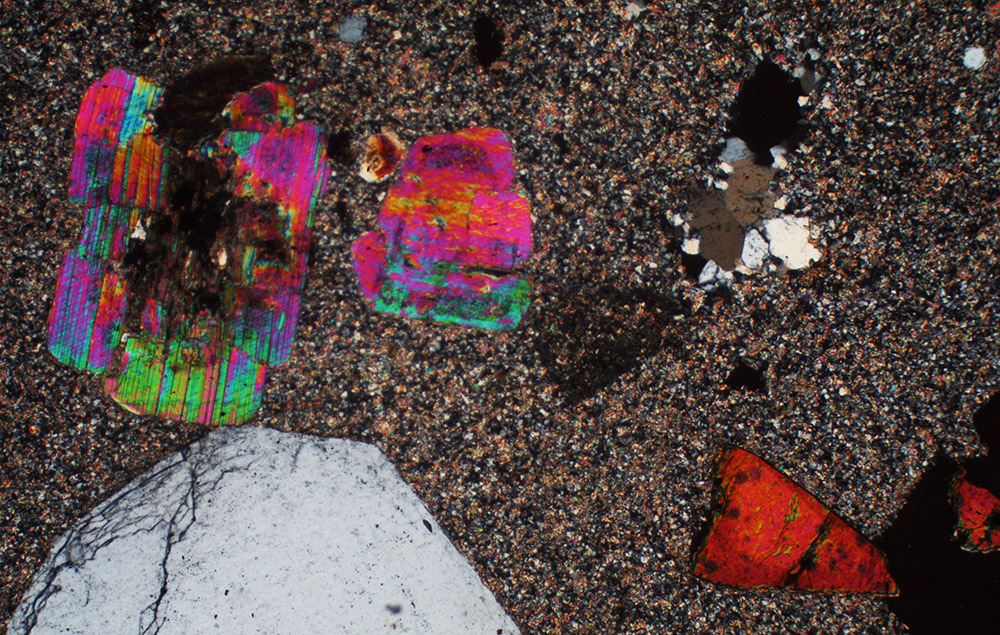Charles Howard Sidebotham, 1872 - 1936
by Brian Stevenson
last updated August, 2023
C.H. Sidebotham was an English geologist and metallurgist, and a graduate of the Royal School of Mines. For many years he worked as an analytical chemist and operated an agency for sales of building materials (presumably stone, etc.). He also taught geology at the Manchester Municipal School of Technology. He was elected as a Fellow of the Geological Society in 1903.
Sidebotham also produced high-quality microscope slides with thin-sectioned minerals (Figure 1). Their professional finish and custom-printed labels suggest that Sidebotham prepared them for sale, although I have yet to locate any advertisements from Sidebotham. Being a teacher, he may have prepared them for sale to his pupils. Supporting that idea, he wrote the preface for a textbook on microscopical examination of minerals in 1912 that instructed students to acquire mounted specimens.
C.H. Sidebotham was not related to the well-known photographer, entomologist, and botanist Joseph Sidebotham (1824-1885). Joseph Sidebotham was an early force behind microscopy in the Manchester area, a colleague of J.B. Dancer and other early photographers/microscopists, and is mentioned in Brian Bracegirdle’s Microscopical Mounts and Mounters.

Figure 1.
Microscope slides of thin-sectioned minerals, prepared by Charles H. Sidebotham. They likely date to the first 1-2 decades of the 1900s, when he was a lecturer of geology and wrote on microscopical examination of geological specimens. To prepare these mounts, Sidebotham would have ground each specimen smooth on a side, affixed that side to a glass slide with balsam or other mountant, then ground down the upper surface of the specimen using a succession of polishing tools. A consequence of doing so is that a grinding wheel may occasionally touch part of the glass slide and buff it to a cloudy appearance – this is apparent in the upper left section of the middle slide.

Figure 2.
C.H. Sidebotham in 1905. Adapted for nonprofit, educational purposes from https://www.ancestry.com/family-tree/person/tree/9618574/person/6081858239/facts
Charles Howard Sidebotham was born on March 13, 1872, in Salford, Lancashire (now Manchester). He was the first of three children of Charles Henry and Mary Ann Sidebotham. The father was a retailer of furniture for schools and churches.
Our future microscopist/geologist attended the Royal School of Mines, in London, from 1891-1894. He was awarded the Bessemer Medal and Prize in 1894, an award given to the top student in metallurgy.
After graduating, Sidebotham moved back to the Manchester area. The 1896 Register of his college listed him as living in Heaton Moor, Stockport, with an occupation of “science lecturer, School of Science and Art, Deansgate, Manchester”. The record of his 1897 marriage to Mabel Cowlrick gave his occupation as “analytical chemist”.
Shortly afterward, Sidebotham began work as a self-employed “agent of building materials”, according to the 1901 national census. The 1902 baptism records of his daughters listed Sidebotham’s occupation as “secretary”. The 1911 census referred to his as “secretary to a limited company”. He continued to teach geology, too.
Charles Sidebotham was elected to membership in the Geological Society on December 2, 1903. Later references to him often included his titles “F.G.S.” (Fellow of the Geological Society) and “A.R.S.M.” (Associate of the Royal School of Mines).
He wrote the preface to a book, Micropetrology for Beginners: An Introduction to the Use of the Microscope in the Examination of Thin Sections of Igneous Rocks, in 1912. His words, and the subject of the book, suggest that Sidebotham’s mineralogical microscope slides may date from around this time:
“In recommending the following pages to the attention of students and teachers of Practical Petrology, I may say that some fifteen years' teaching experience in this subject had fully convinced me of the want of such a work. It is not intended in any way to take the place of well-known works, such as ‘Hatch's’ and ’Harker's’ text-books, but to supplement them, and to serve as a handy work of reference for the laboratory; and I venture to think that it supplies certain information in which the latter works are lacking, but which is very essential to the beginner in this subject, and is not altogether easy of access. Some attempt was made to supply it, with partial success, in the Manchester School of Technology, by a series of printed papers; but this plan had certain obvious disadvantages, which it is hoped this book will overcome. In addition to the study of a typical series of sections as recommended, and which should be easily accessible to all petrological students, the work contains some information as to the preparation of material, the choice of the microscope, and the optical properties of minerals - all of which should be of value to the beginner. Lastly, the cost of the work will not, I think, act as a deterrent to any student who is really anxious to acquire the rudiments of the subject; and having done so much, its inherent fascination can be relied on to induce him to pursue his studies further.”
Charles Sidebotham’s building agency business ended with bankruptcy in 1923. He then took work as a representative for a brass foundry.
Charles H. Sidebotham died on October 2, 1936, of acute pneumonia and influenza.

Figure 3.
A fossil in a thin-section of “foraminiferal limestone from Cauldron (sic) Lowe, Staffordshire”, prepared by C.H. Sidebotham ca. 1910 (see Figure 1). Photographed with a 10x objective lens, C-mounted digital SLR camera, and crossed polarizing filters on a Leitz Ortholux II microscope.

Figure 4.
“Quartz felsite from Cornwall”, prepared ca. 1910 by C.H. Sidebotham (see Figure 1). Photographed with a 3.5x objective lens, C-mounted digital SLR camera, and crossed polarizing filters on a Leitz Ortholux II microscope.
Resources
Baptism record of Charles Howard Sidebotham (1872) Parish records of St. Mary., St. Denys, and St. George, accessed through ancestry.com
Baptism records of Dorothy Mary Sidebotham and Mabel Elizabeth Sidebotham (1902) Parish records of St. Thomas, Heaton Norris, accessed through ancestry.com
Bracegirdle, Brian (1998) Microscopical Mounts and Mounters, Quekett Microscopical Club, page 83
England census and other records, accessed through ancestry.com
The London Gazette (1923) Bankruptcy Act, Receiving Orders, “Sidebothm, Charles Howard, carrying on business at 90 Deansgate, Manchester, building specialties agent”
The Manchester Municipal School of Technology: Calendar (1913) “Lecturers and Professors … C.H. Sidebotham, A.R.S.M., F.G.S., Lecturer in Geology”
Marriage record of Charles Howard Sidebotham and Mabel Cowlrick (1897) Parish records of St. Luke, Lambeth, accessed through ancestry.com
Proceedings of the Geological Society (1903) Minutes of the December 2 meeting, Vol. 60, page iii
Register of the Associates and Old Students of the Royal College of Chemistry, the Royal College of Mines and the Royal College of Science (1896) “Sidebotham, Charles H. 1891-94. Metallurgy. Assoc. R.S.M. Bessemer Medal and Prize 1894. Science Lecturer, School of Science and Art, Deansgate, Manchester. Heaton Moor House, Heaton Moor, Stockport”
Register of the Associates and Old Students of the Royal School of Mines (1920) “Sidebotham, Charles Howard. 1891 to 1894. Metallurgy, A.R.S.M., Bessemer Medalist, F.G.S. Record – Lecturer in Geology: Municipal School of Technology, Manchester. Address: 'Corner Croft', Broken Cross, Macclesfield, and 90 Deansgate, Manchester”
Rhodes, James E.W. Rhodes (1912) Micropetrology for Beginners: An Introduction to the Use of the Microscope in the Examination of Thin Sections of Igneous Rocks, with preface by C.H. Sidebotham, Longmans, Green and Company, London



